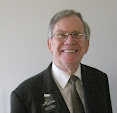DNA Sales?
Right now, some DNA tests are on sale for greatly reduced prices for Christmas.
I see that MyHeritageDNA is $52 Canadian rather than $129. Other companies are also offering sharply reduced prices right now.
If you are thinking of taking a DNA test, the prices will probably never be better.
These are normally "autosomal DNA tests", sometimes called "family finder tests". They are most useful for finding 4th cousins or closer relatives.
For more distant relatives, YDNA (Y-chromosome paternal lineage) and MitochrondrialDNA (X-chromosome maternal lineage) tests may be helpful, but are typically more expensive and are exclusive to one line. (In contrast, autosomal tests check for matches on all lines.)
DNA tests tend to be most useful when paper documentation of ancestry is absent, (e.g. adopted children)
My Buchanan ancestral line can be documented to Ireland in the mid 1700s. My cousins have taken YDNA tests, which identify our family as a "typical chiefly line of Clan Buchanan" in Scotland, which may be frustratingly vague, but is more information than we had. These chiefs claimed to be descendants of the ancient kings of Ireland, going back into times of myth and legend.
It can be interesting, just to see if you can identify your connection to people who match your DNA.
Anxestry.com currently has the largest number of tested individuals, so the best chance of finding lots of matches. If you have been tested and want to see how someone matches your results, you might try giving them a DNA testing kit for Christmas. But make sure it is from the same company that tested your DNA, Different companies use different criteria, so trying to match results from different companies is hard.
If DNA interests you, now is a good time to be shopping. Mothers Day is the only other time during the year when the DNA testing companies tend to have sale prices.

